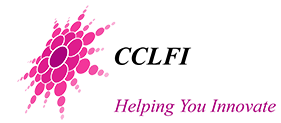These tables analyze the project's success using KPA tools. You can also view the executive summary of the project.
Capital/Assets and Vulnerabilities Before the Project
| ASSETS/CAPITAL | VULNERABILITIES |
| STAKEHOLDER CAPITAL | |
|
+ Partnership with DTI facilitated skills training programs, i.e., meat processing or cosmetology, for selected members. + Continuous access to LBP loans and additional loans availed through NLSF. |
|
| FINANCIAL CAPITAL | |
|
+ Net income in 2002 was PhP145,000. CBU generated = PhP943,000 + Credit line of P5M with LBP.
|
- Financial liability with LBP amounted to P2.8M. The outstanding production loan was restructured and the GDMPC had to make amortization payments of P500,000 per year.
|
| STRUCTURAL CAPITAL | |
|
+ Broader membership base. In 1999, the GDMPC had 183 members who are mostly from barangays Gata Daku and Kinangay Sur. In 2002, a total of 679 members came from eleven brgys. in Clarin. + LACCAS software used for financial monitoring: provides Local Area Networking (LAN) and generates various financial reports needed for monitoring.
|
- Absence of policies and procedures on MF
|
| HUMAN CAPITAL | |
|
+ Highly motivated manager: takes the initiative in teaching herself the ways of making a cooperative more effective and efficient; resourceful in finding institutions that extends financial support; continuously upgrading her skills; and, capable of teaching the staff. + Younger & more educated staff (e.g., bookkeeper has a computer science diploma) who share the common goal of “sacrificing” for the cooperative, e.g., not receiving overtime pay, being paid below the daily minimum wage. + Familiarity among staff and officers since they all come from contiguous barangays
|
- Inadequate knowledge and skills of staff and officers of GDMPC in running a micro-finance project. - “Dole-out” attitude of old members who were recipients of old government credit services like the Masagana 99. - Microentrepreneurs are dependent on credit for their capital needs and would not hesitate to go to moneylenders who charge usurious interest rates. - Only a few among the rural entrepreneurs can have savings from their income because for most, the main income is derived from farming or low-paying jobs, e.g., as a laborer, carpenter
|
| SOCIAL CAPITAL | |
|
+ Tradition of self-help through cooperative enterprises has been handed down to the younger generation. The GDMPC staff are already the second generation members. + Association of coop managers provided a venue for sharing common concerns. The GDMPC manager was elected in 2003 as treasurer of the Zamboanga del Sur and Misamis Occidental Cooperative Network (ZMCN). + Strong social ties typical of small rural communities (kinship, intermarriage, common lineage, e.g., Boholano or Cebuano).
|
- Dominance of “5/6” moneylenders, the alternative to commercial bank loans since they do not require any collateral.
|
| NATURAL CAPITAL | |
|
|
- Clarin is prone to flooding due to the faulty structure of the irrigation system. During heavy rains, the water drains out onto the barangay roads and flows back to the rice fields. |
Interplay of Capital During Project Implementation
| ASSETS/CAPITAL USED | |
| STRUCTURAL CAPITAL |
|
| SOCIAL CAPITAL |
|
| STAKEHOLDER CAPITAL |
|
| HUMAN CAPITAL |
|
| ACCESS TO TECHNOLOGY |
|
| VULNERABILITIES ADDRESSED | |
| HUMAN CAPITAL |
|
| FINANCIAL CAPITAL |
|
| SOCIAL CAPITAL |
|
| INTERVENTIONS ON THE ASSETS AND VULNERABILITIES | |
| STRUCTURAL CAPITAL |
|
| FINANCIAL CAPITAL |
|
| SOCIAL CAPITAL |
|
| STAKEHOLDER CAPITAL |
|
Changes in Assets/Capital After the Project
| GDMPC | MEMBER/COMMUNITY | ||||||||||||||||
|---|---|---|---|---|---|---|---|---|---|---|---|---|---|---|---|---|---|
| FINANCIAL CAPITAL |
|
|
|||||||||||||||
| STRUCTURAL CAPITAL |
|
|
|||||||||||||||
| HUMAN CAPITAL |
|
|
|||||||||||||||
| SOCIAL CAPITAL |
|
|
|||||||||||||||
| STAKEHOLDER CAPITAL |
|
||||||||||||||||
